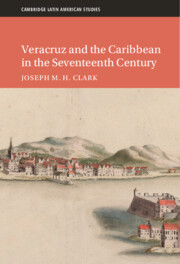Book contents
- Veracruz and the Caribbean in the Seventeenth Century
- CAMBRIDGE LATIN AMERICAN STUDIES
- Veracruz and the Caribbean in the Seventeenth Century
- Copyright page
- Dedication
- Contents
- Figures
- Maps
- Tables
- Acknowledgments
- Note on the Text
- Abbreviations
- Maps
- Introduction
- Part I Building the Mexican-Caribbean World
- 1 Veracruz Before the Caribbean
- 2 Environment, Health, and Race, 1599–1697
- 3 Imperial Designs and Regional Systems
- 4 The Large and Small-Scale Introduction of Africans to Veracruz
- Part II The Caribbean in Veracruz
- Appendices
- Bibliography
- Index
- Cambridge Latin American Studies
4 - The Large and Small-Scale Introduction of Africans to Veracruz
from Part I - Building the Mexican-Caribbean World
Published online by Cambridge University Press: 19 January 2023
- Veracruz and the Caribbean in the Seventeenth Century
- CAMBRIDGE LATIN AMERICAN STUDIES
- Veracruz and the Caribbean in the Seventeenth Century
- Copyright page
- Dedication
- Contents
- Figures
- Maps
- Tables
- Acknowledgments
- Note on the Text
- Abbreviations
- Maps
- Introduction
- Part I Building the Mexican-Caribbean World
- 1 Veracruz Before the Caribbean
- 2 Environment, Health, and Race, 1599–1697
- 3 Imperial Designs and Regional Systems
- 4 The Large and Small-Scale Introduction of Africans to Veracruz
- Part II The Caribbean in Veracruz
- Appendices
- Bibliography
- Index
- Cambridge Latin American Studies
Summary
Chapter 4 examines Veracruz’s role as a hub of the transatlantic slave trade. Drawing on archival manuscripts held in Mexico and not previously used in studies of the slave trade, it offers a detailed examination of the slave trade to Mexico in three chronological stages: an early period (before 1595); the asiento period (1595–1640); and a decline period (1640–1713). In its examination of both the early and later stages of the slave trade, the chapter departs from earlier studies that focus mainly on the Portuguese asiento period, showing that more captives arrived in Veracruz in the early and decline periods than has been acknowledged and those who did hailed disproportionately from West Africa, rather than West Central Africa. Across all periods, the chapter demonstrates the complexity of the early modern slave trade to the Spanish Caribbean, focusing especially on the intercolonial slave trade and on nonlinear slave ship voyages that delivered captives in multiple colonies. In this, it argues that we should not think of captives who arrived in Mexico as a distinct “cohort,” but as part of a regionwide diaspora to multiple Caribbean territories.
Keywords
- Type
- Chapter
- Information
- Veracruz and the Caribbean in the Seventeenth Century , pp. 106 - 148Publisher: Cambridge University PressPrint publication year: 2023

